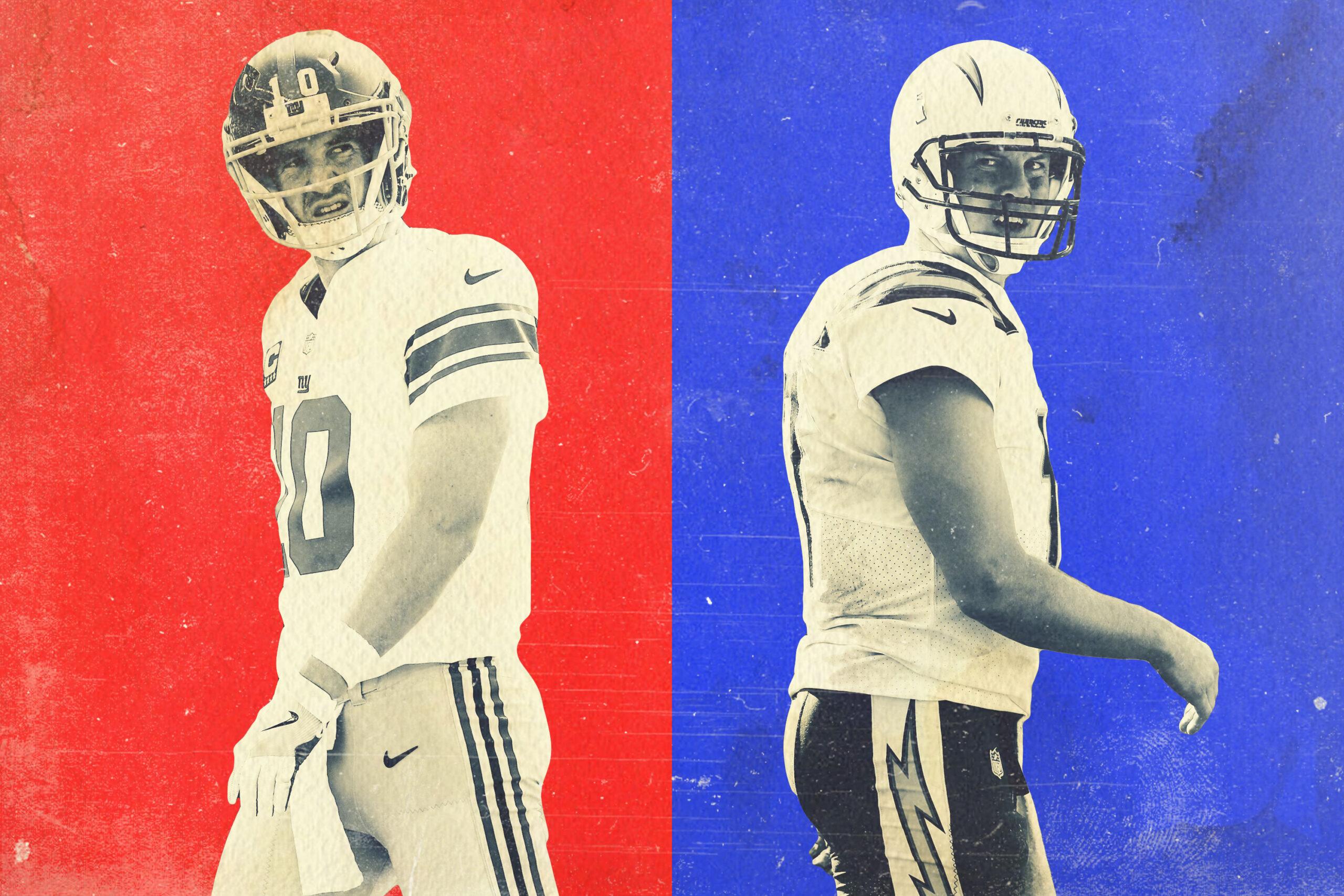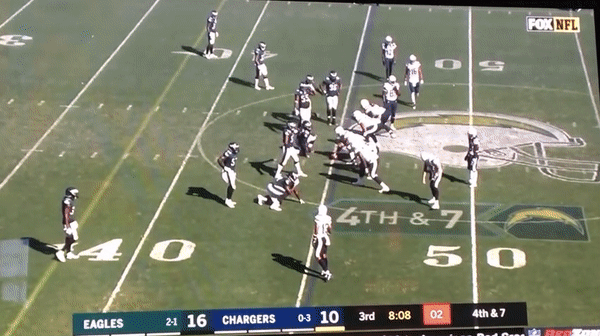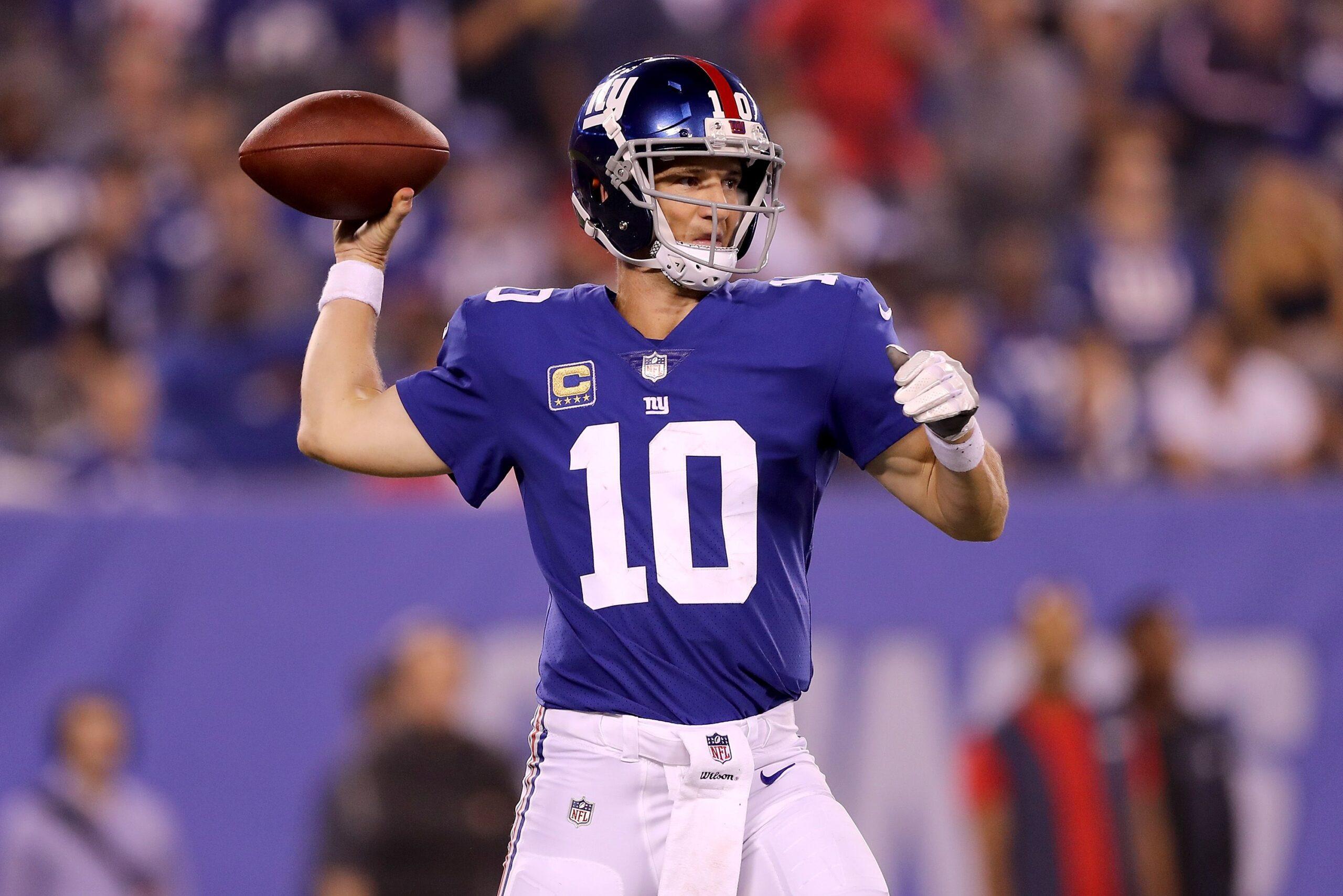
The NFL careers of Eli Manning and Philip Rivers have been linked from the moment they began. When Manning told the Chargers’ brass before the 2004 draft that he would sit out the season if San Diego selected him first overall, it set off a chain of events that led to the Giants trading Rivers (and two additional draft picks, including their 2005 first-rounder) to bring Manning to New York. Along with setting the stage for the first of many gloriously awkward Eli Faces, the move also guaranteed that the two quarterbacks would be measured against each other forever.
More than 13 years after that fateful draft, the latest comparison between the passers is pretty damn depressing. The Chargers and Giants will meet on Sunday as two of the league’s four winless teams this season. Any time you’re on a list with the modern-day Browns and 49ers, things probably have taken a turn for the worst. For the Chargers, 2017 has brought more of the same rotten luck the franchise has dealt with over the past few seasons. Injuries to key players have already taken their toll, and the close-game horrors that haunted Rivers’s crew last year have followed it up I-5 from San Diego to Carson, California. For the Giants, whose offseason moves were touted as finishing touches to a roster that made the playoffs in 2016, the first month of this campaign has amounted to a drastic step back. The offense has continued to sputter, and the defense that ruined opponents last year has suddenly cratered.
The Stan Humphries–led 1992 Chargers are the only team in NFL history to make the playoffs after opening a season 0-4, and with the 2017 Chargers and Giants now facing nearly impossible climbs back to relevance, it’s time to consider where both franchises should go from here. Rivers will be 36 years old in December, has eight kids at home, and commutes an hour and 18 minutes to Costa Mesa, California, during the week. Manning will turn 37 three days after the regular-season finale, and at this point, New York’s succession plan under center consists of 2017 third-round pick Davis Webb and nothing else. (Yes, I know Geno Smith is on the roster.)
For two franchises that have been defined by the quarterbacks they traded for in 2004, an era appears to be winding down. And with their hopes this fall already all but lost, the next chapter has never seemed more imminent.
The Chargers are barely a month into their Los Angeles experiment, and things for the franchise couldn’t be going any worse. Rivers playing out the final days of his career in a half-empty soccer stadium in front of Eagles fans singing “Fly, Eagles, Fly” sounds like something from a particularly dark Coen Brothers movie. That owner Dean Spanos robbed San Diego of its NFL team and relocated it to a venue stamped with the StubHub logo—only to have fans of opposing teams use the secondary ticket market as a way to ransack the building—feels like sweet justice.
Having to play the equivalent of 16 road games puts the 2017 Chargers at a hellish disadvantage, but their issues run deeper than lodging. Rivers has been less than sharp of late, going a combined 42-of-78 passing with two touchdowns and three interceptions over his past two starts. The running game has been anemic for the second straight season (the Chargers rank 27th in Football Outsiders’ rushing DVOA), and the offensive line has been routinely overmatched. Defensively, players who looked great last season under John Pagano, such as inside linebackers Korey Toomer and Jatavis Brown, have struggled to settle into new coordinator Gus Bradley’s scheme.
Still, even with their issues, these Chargers aren’t a typical 0-4 team. After Keenan Allen tore his ACL in Week 1 of the 2016 season, the wide receiver looks all the way back to his cornerback-destroying form, and he pairs with the underrated Tyrell Williams to give Rivers a formidable tandem of pass catchers. The receiving corps should only get better with rookie first-round pick Mike Williams expected to return from a back injury and join the fold soon. The foundation of L.A.’s defense is already in place with Joey Bosa and Melvin Ingram patrolling the edge, cornerback Casey Hayward picking off passes left and right, and thumping linebacker Denzel Perryman set to come back from an ankle ailment later in the season. Three of the Chargers’ losses this fall have come by a combined seven points, and even their Week 3 matchup against the Chiefs was within one score until Kansas City running back Kareem Hunt salted the game away with a 69-yard touchdown in the game’s final two minutes. Two late missed field goals separate the Chargers from a winless start and a shot at 2-2, but the stark reality is that this is now an 0-4 team playing in the league’s toughest division.
That puts the Chargers in a quandary for the long term. Nearly the team’s entire core is set to return in 2018, and even those slated to become free agents (Tyrell Williams, tight end Antonio Gates, and left guard Matt Slauson) have replacements already on the roster (Mike Williams, Hunter Henry, and Forrest Lamp). With the talent that L.A. has in place, it’s reasonable to think that bringing Rivers back for another year would place the Chargers between the middle of the pack and the playoff picture. (That doesn’t account for the vengeful spirit apparently sent to torment this team.)
This outlook is why the 2018 draft might represent the franchise’s best chance at establishing a true succession plan for life after Rivers retires. General manager Tom Telesco dealt a conditional seventh-round pick to the Bills for Cardale Jones in late July, and the former Ohio State star was a flier worth taking. But having a first-round pick in the range that the front office selected last spring (no. 7 overall) would put Telesco in prime position to snag his QB of the future in a draft that’s supposedly replete with appealing options.
The need to go in that direction would become even more urgent if Rivers decides he’s done with this shit and hangs up his bolo tie at season’s end. I mean, look at this guy: He clearly isn’t having a good time.

Even before the Chargers’ start in Los Angeles devolved into a full-blown disaster, there were reports that Rivers was reluctant to follow the team north. Another lost season and the perils of Southern California traffic are unlikely to make him feel better about that idea moving forward. The six-time Pro Bowler has two years and $14 million guaranteed remaining on his deal after this season. If Rivers does choose to retire, it would cost the Chargers $7 million in dead money against their 2018 cap and leave them with a healthy $41.8 million in spending room next offseason.
This franchise boasts an array of young, exciting pieces, and whichever quarterback ultimately replaces Rivers should step into a better situation than most incoming passers do. That makes the next 12 months equal parts compelling and bittersweet. For all the misfortune that has befallen this franchise in recent seasons, better days aren’t far away. Yet the quarterback to lead its turnaround probably won’t be the one who has won 101 games for the Chargers and has thrown more touchdown passes (320) than all but seven players ever. When Rivers and Manning take the field together on Sunday afternoon, it might be the final note in their shared history.
The scenario that the Giants face with Manning has some similarities to the one with Rivers in Los Angeles, but New York’s predicament is substantially different. There have been no whispers that Manning could retire following the 2017 campaign, and it’s tough to imagine that the franchise would move on from a quarterback who has $12.4 million in guarantees left on his deal after this season. (Even Rivers and Manning’s contract structures are eerily similar.) Like the Chargers, though, the Giants would be wise to consider looking for Manning’s eventual successor in the 2018 draft, even if other organizational changes feel more immediately pressing.
Unlike the case with first-year man Anthony Lynn in L.A., the Giants aren’t working through the kinks that come with an offseason head-coaching change. Ben McAdoo’s second season at the helm was supposed to provide an opportunity for the Giants to improve upon their 11-5 effort in 2016; instead, they’ve experienced a massive slide, and the offense appears to be running in place. Holding McAdoo’s feet to the flames in only his second year, with one playoff appearance in the bag, might seem harsh. But his promotion always represented an extension of the Tom Coughlin regime. McAdoo has pulled the strings of the Giants offense for four years now, and the unit’s best DVOA finish over that span was a middle-of-the-pack 15th in 2014.
Adding 2017 first-round pick Evan Engram and receiver Brandon Marshall to complement wideouts Odell Beckham Jr. and Sterling Shepard was supposed to give this group a much-needed jolt, but the Giants offense looks much the same as the middling crew from last fall. Marshall seems like he’s cooked, and Manning’s play remains inconsistent and uninspired. It doesn’t help matters that the offensive line continues to be a train wreck. With right tackle Bobby Hart out last week, the Giants decided to move left guard Justin Pugh to Hart’s spot, shift right guard John Jerry to the left side, and slot D.J. Fluker in for Jerry at right guard. With guard Brett Jones returning from a hip injury this week, there’s likely to be even more shuffling up front, which shouldn’t even be possible.

New York’s offensive line woes point to some of the problems GM Jerry Reese will face over the course of the next year. Whereas the Chargers already have defined solutions to their forthcoming roster departures and deficiencies, the Giants aren’t so lucky. Pugh and center Weston Richburg are set to be free agents after this season, and those are the good offensive linemen on the New York payroll. Jones and Fluker are poised to be free agents as well, and given the untenable play of tackles Ereck Flowers and Bobby Hart, it’s possible that Reese could enter next year with question marks at all five spots along the line. As things stand now, the Giants will have about $30.5 million in cap room to play with next spring, but that money will dry up fast after shelling out cash for a brand-new starting five. With the shortage of quality linemen around the league, Richburg and Pugh should have voracious suitors on the open market. Retaining them will likely require Reese to pay the sticker price, and that’d still leave the team without a viable tackle. The whole situation is an absolute mess.
The financial issues only become more troublesome when you take into account that the Giants’ two best players—Beckham and safety Landon Collins—are entering the final year of their rookie deals in 2018. Reese has one franchise tag at his disposal and no conceivable option to let either player hit free agency. That means at least one of those guys will almost certainly land a market-setting extension before the end of next season. A thinning pool of money puts the Giants in the unenviable position of a being a team with fatal flaws that lacks the resources to address them.
This is a reality brought on by the approach Reese and the front office took to the free-agent market in 2016. By doling out a flurry of massive contracts to pass rusher Olivier Vernon, cornerback Janoris Jenkins, and defensive tackle Damon Harrison, the Giants left themselves without much future wiggle room. All three signings were undeniable victories last season, with the defense fueling the team’s run to the playoffs and jumping from 30th to second in DVOA. But those contracts were supposed to prop open the Giants’ short-term window as contenders. Instead, as Reese redid the entire second floor of his house, the wood downstairs began to rot.
With so much money devoted to the defense and Manning set to come back in 2018 at the low, low price of $22.2 million, most of the Giants’ roster is essentially frozen in place. If their circumstances were like the Chargers’, with a solid young nucleus and without glaring flaws, that would be fine. But that’s not the truth in New York. For the past two offseasons, the Giants have made moves designed to instantly fix issues and thrust this team into the Super Bowl mix. If the Giants’ nightmarish 2017 continues and Reese lands a pick somewhere in next spring’s top 10, that draft might be the time to eschew immediate help in favor of finding Manning’s heir under center.
Using a first-round pick on a quarterback with an established one already in place can feel like the waving of a white flag—a concession that a team feels that it isn’t close to contending. For both the Giants and Chargers, that admission is made all the more difficult by the sheer amount of time that Manning and Rivers have been the faces of their respective organizations. Since the merger in 1970, only five quarterbacks—Peyton Manning, Brett Favre, John Elway, Tom Brady, and Dan Marino—have started more games for a single franchise than Eli has for the Giants (203). Only seven guys top Rivers’s mark of 180. Since taking over as his team’s starting quarterback, neither Manning nor Rivers has missed a game.
That’s what makes Sunday’s game between 0-4 clubs—both of whom are almost certain to miss the playoffs—so intriguing. A generation of football for two quarterbacks is closing much in the same way it began: side by side.